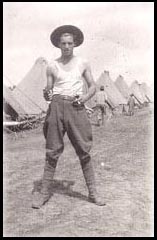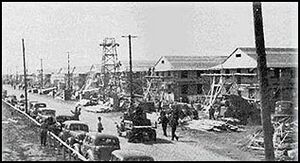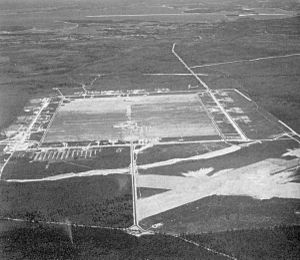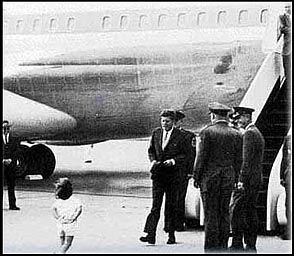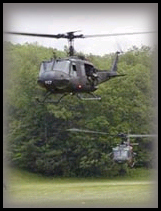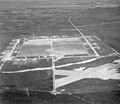Camp Edwards facts for kids
Quick facts for kids Camp Edwards |
|
|---|---|
| Part of Massachusetts National Guard United States Army Reserve |
|
| Bourne, Falmouth, and Sandwich, Massachusetts | |

Tactical Training Base Kelley, Camp Edwards, 2018
|
|
| Type | National Guard Training Camp |
| Site information | |
| Owner | Commonwealth of Massachusetts |
| Controlled by | |
| Open to the public |
With prior permission |
| Site history | |
| Built | 1941 |
| Built by | U.S. Army Corps of Engineers |
| In use | 1941–present |
| Battles/wars | World War I, World War II, Cold War |
| Garrison information | |
| Current commander |
Brigadier General Frank Keating |
| Garrison | Falmouth, Massachusetts |
| Occupants | U.S. Army, Massachusetts National Guard |
Camp Edwards is a major military training base in Massachusetts, located on Cape Cod. It's named after Major General Clarence Edwards, who was a commander during World War I. Today, it's an important home for parts of the Massachusetts Army National Guard.
The idea for Camp Edwards started in 1931. The National Guard needed a bigger training area than their old one, Camp Devens. They found Cape Cod to be a great spot. The camp was officially opened in 1938.
In 1940, the U.S. Army leased Camp Edwards. They wanted it as a training spot for World War II. The Army built a lot of new buildings very quickly. In just four months, they built enough space for 30,000 soldiers. At the busiest time, 30 buildings were finished every single day! During the war, soldiers trained here before going overseas. They also practiced anti-aircraft and amphibious (land and water) operations. By 1944, many training centers moved to Florida. But Camp Edwards still served as a hospital and a camp for prisoners of war. It also held soldiers who were Absent With Out Leave (AWOL) before sending them overseas.
After World War II, Camp Edwards was closed for a while. The Air Force took over nearby Otis Field in 1948, creating Otis Air Force Base. When the Korean War started, Camp Edwards was reopened to train troops again. After that war, it closed down once more. It wasn't reopened for the Vietnam War, but some training still happened there sometimes.
In the 1990s, there was a plan to close Camp Edwards. But many military groups objected, and the camp stayed open. During Hurricane Katrina, the camp helped people who had to leave their homes. It provided shelter for up to 2,500 refugees.
Today, Camp Edwards has special training centers for National Guard troops. These centers are unique in the Northeast. They are designed to look like a town in the Middle East. This helps soldiers practice for real-world situations.
Contents
Military Units at Camp Edwards
Many different military units have trained and been based at Camp Edwards over the years.
- Massachusetts National Guard (since 1908)
- 3rd Battalion, 126th Aviation
Past Units
- Engineer Amphibian Command (trained soldiers for land and water operations)
- East Coast Processing Center (helped organize soldiers during WWII)
Army Units
- Second Battalion, 64th Coastal Artillery Regiment (1942–1944)
- 504th Parachute Infantry Regiment (1943)
- 36th Infantry Division (1942–1943)
- 45th Infantry Division
Marine Units
- 1st Battalion, 25th Marines (1977–2000)
Other Offices
Some non-military government offices also have a presence at Camp Edwards.
Camp Edwards: A Look Back
Early Training on Cape Cod
The story of Camp Edwards began in 1908. The Massachusetts State Militia used the Shawme-Crowell State Forest for weekend training. In 1931, the National Guard decided their old camp was too small. They started looking for a new, larger training area. People had strong opinions about having a military base on Cape Cod. In 1935, a special commission was set up to decide. The War Department then approved buying land on Cape Cod for military training.
In 1936, soldiers began setting up camp and training. They often used old equipment from World War I. This showed how the U.S. was trying to stay out of world conflicts back then.
Between 1935 and 1940, many buildings were constructed. This was a huge project for the state. It employed over 600 workers. In 1938, the camp was officially named Camp Edwards. It honored Major General Clarence Edwards. In 1940, the biggest building project started. The Army leased the camp and began building 1,300 new structures. These buildings were meant to house over 30,000 soldiers. The goal was to finish by early 1941. This was when the 26th Infantry Division was scheduled to start training.
A special railroad track was built to bring materials to the camp. Trucks constantly moved supplies. In November 1940, construction was at its peak. Over 18,000 people worked in three shifts. They finished 30 buildings every day! The entire project was done in just 125 days. It became a model for other camps built during World War II.
In January 1941, the 26th Infantry Division arrived. This division was made up of Massachusetts National Guard members. Over the next few months, more soldiers joined from other states. In April 1941, the 26th Division left for other training. Other National Guard and Army Divisions came to train at Camp Edwards. The 26th Division returned on December 6, 1941. They expected to finish their service soon. But the bombing of Pearl Harbor on December 7, 1941, changed everything. The U.S. declared war, and the division had to stay in service until 1945.
Camp Edwards During World War II
In 1941, the 101st Observation Squadron moved to Otis Field. Concrete runways were built in 1942 and made bigger in 1943. This was because airplanes were becoming more advanced. The field became a key base for fighting submarines. This was due to its location near the ocean.
In February 1942, a large fire destroyed 125 vehicles at the base. This was the biggest fire ever at Camp Edwards.
The Anti-aircraft Artillery Training Center was also at Camp Edwards. It had 42 battalions. This center was moved to Florida in June 1944.
The Engineer Amphibian Command started in June 1942. It was later called the Amphibious Training Command. This command trained soldiers for land and water attacks. Training happened at nearby Camp Candoit and Camp Havedoneit. It also took place on Martha's Vineyard. The 36th Infantry Division and the 45th Infantry Division trained here. These divisions later fought in Europe. The first seasickness pill was also tested by these divisions.
A special hospital was set up at Camp Edwards in 1942. It treated wounded soldiers returning from the war. The hospital also trained nurses for the Women's Army Corps. Over 2,500 nurses trained at Camp Edwards before going overseas.
In 1942, a fake German village was built at Camp Edwards. This was one of the first times soldiers trained for fighting in cities.
A special center for soldiers who went AWOL (Absent With Out Leave) was created in October 1943. This was the first such place in the U.S. Most soldiers stayed for about a month before being sent out. Between 1943 and 1945, over 40,000 men passed through this center.
After the Allies started fighting in North Africa in 1942, the U.S. Army built a prisoner-of-war (POW) camp. This camp held captured German soldiers. It could hold up to 2,000 POWs at a time. Many were from Rommel's famous Afrika Korps. The prisoners worked around Camp Edwards. They also helped on local farms and cranberry fields. German prisoners helped clean up after a hurricane in 1944. By the end of the war, about 5,000 POWs had been processed through this camp.
Finally, Camp Edwards was a place where soldiers were officially released from the military. From 1945 to 1946, over 12,900 men were discharged here.
The Cold War Era
After World War II, soldiers at Camp Edwards continued to train. They sometimes fired artillery rounds into the sea. During the Cold War, Camp Edwards stayed active. It continued training troops. During the Korean War, the base was very busy again, almost like during World War II. In 1958, there was a suggestion to do nuclear processing at the camp, but it never happened.
Growth of Otis Air Force Base
Camp Edwards was mostly used for National Guard training after 1946. The runway was made longer. In 1948, the Air Force took over Otis Field. They renamed it Otis Air Force Base. Camp Edwards was reactivated in 1950 to support troops for the Korean War.
In 1954, Congress allowed the camp to be transferred to the Air Force. This was for running a military airfield. The Army still used its usual areas. The Air Force built many new hangars and buildings. Otis became an important Air Defense Command base. It helped protect the Northeast.
In 1955, the 551st Airborne Early Warning and Control Wing came to Otis Air Force Base. They flew special planes called EC-121 Constellations. These planes could fly long distances over the Atlantic Ocean to watch for threats. Other units at Otis also helped with air defense. Otis Air Force Base was part of a high-tech defense system called Semi Automatic Ground Environment. In 1959, anti-aircraft missiles called CIM-10 BOMARC were installed at Otis.
When John F. Kennedy became president in 1960, Otis became a frequent stop for Air Force One. This was because the Kennedy Compound was nearby in Hyannisport. President Kennedy even had office space at the base.
National Guard Takes Control Again
In 1973, the Army started leaving Camp Edwards. Otis Air Force Base also closed that year. But in 1975, Otis reopened as Otis Air National Guard Base. All military operations on the land came under the control of the new Massachusetts Military Reservation. In 1978, the Air Force returned with a new radar system called PAVE PAWS. This facility became known as Cape Cod Air Force Station.
In 1986, an artilleryman accidentally overloaded a gun. The shell went over a mile past the target. It hit U.S. Route 6. Luckily, no one was hurt. But it left a small crater in the road.
Camp Edwards Today
Camp Edwards continues to be a vital training ground for Army National Guard units from all over the country. There have been talks about it becoming a new training center for the Department of Homeland Security.
The Regional Training Institute moved to Camp Edwards in 1986. This institute trains future officers for the Massachusetts Army National Guard. All their training activities now happen at Camp Edwards.
Environmental Cleanup Efforts
Since the late 1970s, Camp Edwards has been a site for a huge environmental cleanup project. The base sits on top of the main drinking water source for Cape Cod. For many years, explosives, ammunition, fuels, and chemicals were used and disposed of without much control. This caused pollution in the groundwater. The Air Force and Army are now working to clean up these areas. The Massachusetts National Guard is also changing its training methods. They want to be more environmentally friendly while still meeting military training needs.
Base Closure Proposals
In 1998, a congressman suggested closing Camp Edwards. In 1999, the Governor proposed turning part of the camp into a conservation area. This idea faced strong protests from the Massachusetts National Guard. The proposal was later dropped.
In 2005, there was another vote to close Otis Air National Guard Base. This would have affected all parts of the Massachusetts Military Reservation. However, an agreement was reached. The 102nd Air Fighter Wing changed its mission. The Coast Guard Air Station Cape Cod also stayed. Even though the fighter jets moved, other military groups remained. This ensured that Camp Edwards could continue its important training missions. They share costs like security, road maintenance, and utilities.
After Hurricane Katrina, Camp Edwards opened its doors to 250 people. They were evacuees from New Orleans. They stayed in old military barracks that were quickly updated. They also received meals at the dining halls.
New Training Facilities
On June 7, 2008, two new training facilities were opened. They were named after fallen soldiers from the Massachusetts Army National Guard.
One facility is called Tactical Training Base (TTB) Kelley. It's designed to prepare soldiers for combat quickly. It looks like a town in Iraq, Afghanistan, or the Balkans. Soldiers live in tents and the base has barriers and guard towers. It helps them practice for real missions. TTB Kelley is named after Sgt. Michael J. Kelley. He was killed in Afghanistan in 2005.
The other facility is Military Operations in Urban Terrain (MOUT) Site Calero. It has 48 buildings made from shipping containers. Some are two stories high. It looks like a city with homes, a school, and a market. Soldiers learn how to clear buildings and search areas. They also learn to tell the difference between civilians and enemies. MOUT Site Calero is named after Maj. Jeffrey R. Calero. He was killed in Afghanistan in 2007.
Other new or improved training areas at Camp Edwards include:
- Battle Simulation Center: This center uses computers to create realistic battle scenarios. It helps units practice war games and emergency responses.
- Live Fire Shoot House: Plans were made in 2010 for this facility. It lets soldiers practice shooting in a small, enclosed space. This helps them prepare for close-quarters combat.
- Tactical Training Team (TTT): This team of experienced soldiers trains others. They teach skills like combat techniques, weapons use, and first aid. All TTT members have recently returned from deployments in Iraq or Afghanistan.
In September 2014, three Afghan military officers visited Camp Edwards. They went missing from a cultural event at a mall. They were later found trying to enter Canada and asking for asylum.
Training Support Center (TSC)
The Training Support Center has many specialized facilities:
- Rappel Towers: Two 60-foot towers for practicing rappelling.
- Obstacle Course: A course to build physical fitness and teamwork.
- Driver Training Area: For practicing driving military vehicles.
- Call For Fire Trainer (CFFT): A simulated battlefield for training observers to direct artillery fire.
- Indoor Simulated Weapons Training: Includes systems for practicing with firearms safely indoors.
- Leadership Reaction Course (LRC): Has 17 stations to help soldiers develop leadership skills and teamwork.
- Virtual Convoy Operations Trainer (VCOT): Simulates driving convoys in places like Baghdad. It helps soldiers practice missions and review their actions.
Notable People Who Trained Here
- Charles H. Coolidge - a Medal of Honor recipient during WWII.
- Bill Mauldin - a famous cartoonist.
- Eddie Waitkus - a professional baseball player.
- Henry T. Waskow - a military officer.
Images for kids


